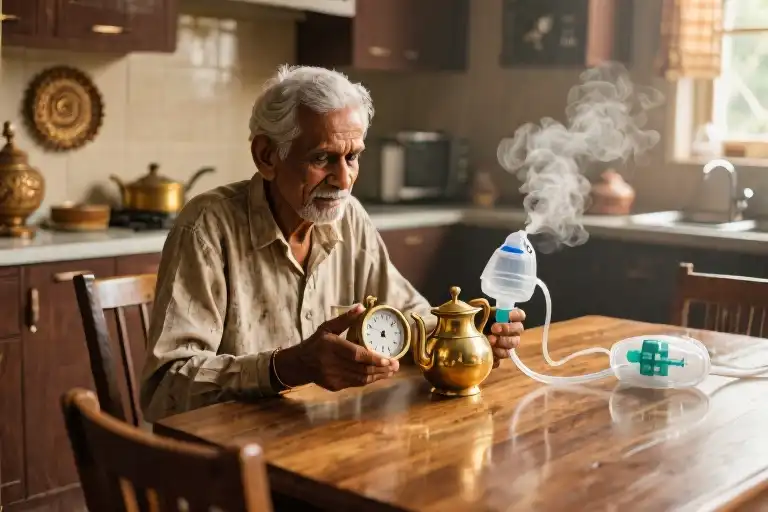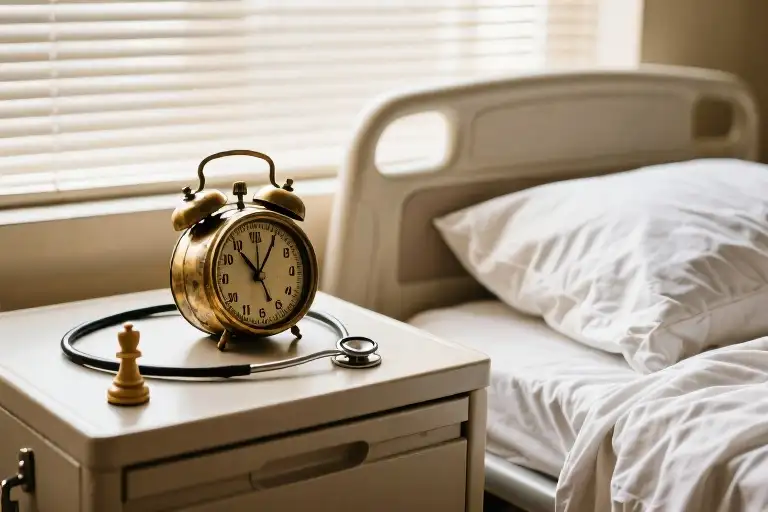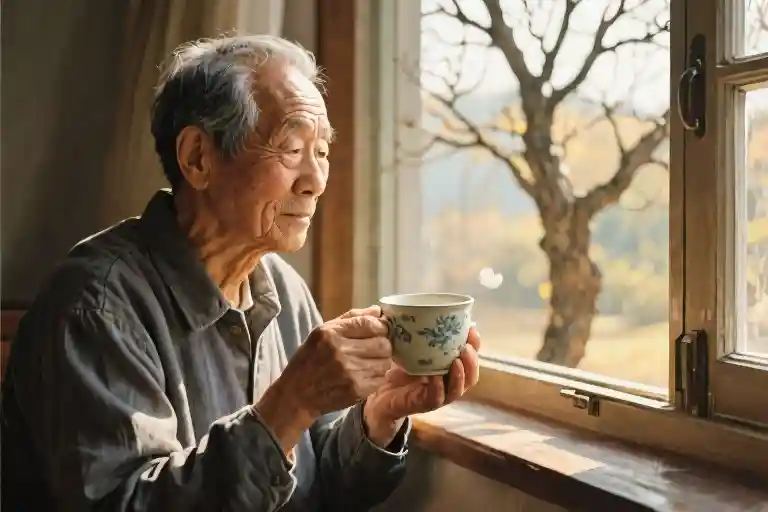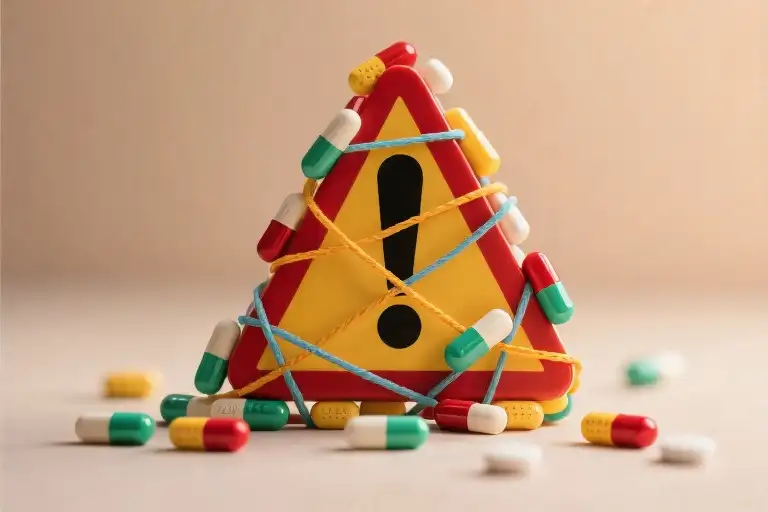The irony of modern life reveals itself in the most unexpected ways. We meticulously construct hierarchies of worry—career ladders to climb, inboxes to empty, social media personas to maintain—all while our bodies quietly keep score. It took my grandfather’s persistent cough, echoing through our Delhi home for six unrelenting months, to expose the fragility of these self-important concerns.
That dry, rattling sound became our family’s metronome, marking time with more honesty than any clock. My grandfather, a man who measured his Darjeeling tea leaves to the decimal point and balanced accounting ledgers with chess grandmaster precision, initially dismissed it as seasonal allergies. But winter bled into spring, and the cough remained—an uninvited guest overstaying its welcome in his deteriorating lungs.
In retrospect, those early days carried a peculiar duality. We existed in parallel realities: one where spreadsheet deadlines and academic achievements still mattered, and another where medical terms like ‘progressive pulmonary fibrosis’ began colonizing our dinner conversations. The diagnosis arrived not with dramatic fanfare but through gradual osmosis—whispered consultations, hastily hidden test results, and eventually, the visible weight loss that no amount of tailored suits could disguise.
What stays with me now isn’t the dramatic moments but the ordinary ones rewritten. The same hands that once measured three perfect minutes for tea brewing now struggled with oxygen tank valves. The chessboard where he taught me sacrifice strategies gathered dust while we learned new vocabularies of spirometry readings and corticosteroid doses. His leather-bound account books, previously filled with immaculate figures, now held medication schedules and specialist contact lists.
This quiet unraveling forced uncomfortable questions about life priorities reflection. When your days become measured in cough intervals rather than quarterly reports, what truly constitutes an emergency? How had we—how had I—allowed peripheral anxieties to occupy center stage for so long? The answers, much like my grandfather’s disease, progressed slowly but with irreversible clarity.
There’s a cultural specificity to watching an Indian patriarch, once the embodiment of calculated control, navigate the unpredictability of chronic illness. Our middle-class medical stories rarely make headlines—they unfold in hushed apartment corridors during doctor visits, in the way Ayurvedic remedies quietly appear beside prescription bottles, in the unspoken negotiations between CT scan results and family pride. These are the moments where existential anxiety in modern life becomes tangible, where abstract concerns about ‘work-life balance’ transform into concrete choices between board meetings and bedside vigils.
Through it all, the cough continued its rhythmic commentary, a bodily truth-teller cutting through our carefully maintained fictions. In its persistent cadence, I began hearing questions we’d been too busy to ask: When did we collectively agree to measure our worth in productivity rather than presence? How had we mistaken the background noise of daily irritations for life’s actual soundtrack? The answers, like the steam rising from my grandfather’s abandoned teacup, evaporated before we could grasp them—leaving only the bare essence of what matters.
A Life Measured in Three Minutes
The brass timer on the kitchen shelf had witnessed more family history than our photo albums. Every morning at 6:17 AM, my grandfather would lift it with the same ceremonial care others reserve for religious artifacts. The ritual never varied: two level scoops of Darjeeling (3.18 grams by his postal scale), water at 98°C (‘Boiling kills the flavor’), and that eternal three-minute countdown.
I used to think this precision was about tea. At twenty-three, I finally understood it was his way of conversing with chaos. The same hands that measured tea leaves would later trace the edges of CT scans, as if searching for that one straight line the universe forgot to crumple.
The Mathematics of Daily Life
- Tea Time as Cosmic Order
The kitchen became his observatory. Steam rising from the porcelain cup followed predictable patterns unlike the irregular coughs that later disrupted our mornings. His teaspoon scraped the measuring cup’s edge at the identical 32-degree angle each time – I know because I checked with my geometry protractor during school holidays. - Chessboard Accounting
His checkbook balanced to the last paisa mirrored the chess strategies he taught me. ‘Every pawn move changes the endgame,’ he’d say while reviewing household expenses, demonstrating how a Tuesday grocery splurge required Wednesday electricity savings. The Parker pen’s nib left consistent 0.5mm ink trails through ledger columns, each digit shaped with numeral-specific flourishes. - The Illusion of Control
We never spoke about the deeper truth – that his systems were elaborate defenses against life’s randomness. The same mind that could calculate 15% tips mentally needed Excel spreadsheets for family birthdays. His ‘Monsoon Preparedness Checklist’ (version 17B) included precisely 43 items, yet had no category for progressive pulmonary fibrosis.
Objects as Silent Witnesses
- The 1972 HMT watch he wound daily now sits frozen at 11:14, its hands forever pointing to when his last coherent sentence (‘Is the tea timer still working?’) escaped before the oxygen mask claimed him
- The chessboard we never finished still holds his trapped queen mid-strategy, dust gathering on squares he’d polish weekly with a specific lemon-oil cloth
- His account books show abrupt blank spaces after page 204, where hospital bills replaced household budgets
Before the diagnosis, we believed precision could armor us against fate. Now I brew tea without timers, letting the leaves steep until the color feels right – my small rebellion against the cruel joke that the man who measured life in three-minute increments would lose it to something that couldn’t be clocked or quantified.
The Language Invasion
The cough started keeping time better than our antique wall clock. At first it punctuated his sentences like an awkward comma—three times during breakfast, twice while reviewing the newspaper stock listings. By the third month, it had developed its own rhythm section: a staccato burst every seventeen minutes, precise as his legendary three-minute tea brewing ritual.
Our family meetings took on the cadence of medical rounds. Where we once debated monsoon crop yields and cousin Rohan’s engineering college options, we now passed radiology reports like sacred texts. ‘Ground glass opacity,’ my uncle would pronounce, rolling the phrase around his mouth like a unfamiliar spice. The term clung to our conversations, leaving powdery residue on every subject it touched.
I began noticing how medical jargon colonized our domestic language. My grandmother’s concern about ‘that wheezing sound’ became ‘rales and rhonchi’ in family WhatsApp groups. The steel tiffin box where we stored his prescriptions gradually displaced the chess set on the sideboard, its compartments organizing pills instead of pawns.
Three linguistic shifts marked the transition:
- Diagnostic Terminology – Words like ‘fibrosis’ migrated from doctor’s lips to our dinner table conversations
- Measurement Systems – Tea-steeping minutes gave way to oxygen saturation percentages
- Metaphor Transformations – ‘Cloudy weather’ now described CT scan images rather than monsoon skies
The kitchen calendar became a ledger of invasions—each specialist appointment in red ink, each test result in blue. My grandfather, who once corrected our grammar with the precision of his accountancy ledgers, now patiently repeated ‘idiopathic pulmonary fibrosis’ until we could say it without stumbling.
Medical language brought unexpected gifts amidst its violence. It gave us new units of care—not ‘bring some groceries’ but ‘check the nebulizer mask fits properly.’ Not ‘visit when you can’ but ‘the steroids make him restless after 4pm.’ The clinical terms became ropes we threw each other across the widening gap between what we understood and what we feared.
Yet some translations remained impossible. When the young resident said ‘honeycombing’ to describe his lung tissue, my aunt brought jars of turmeric-infused honey the next morning. The doctor’s metaphor had crossed into our kitchen, but the healing it promised stayed stubbornly out of reach.
3. Negotiating Belief Systems
The CT scan films hung on the living room wall like modern religious icons, their grayscale landscapes positioned between my grandmother’s brass Ganesha figurine and the framed photo of my grandfather receiving his accounting certification. This accidental altar housed our family’s new pantheon – ancient faith, professional identity, and now, Western medical imaging.
‘Progressive pulmonary fibrosis,’ the pulmonologist had said with clinical detachment, his words ricocheting off the examination room walls. My mother translated the diagnosis into Tamil for my grandmother, who immediately began compiling lists of Ayurvedic remedies. ‘We’ll try the honey water treatment first,’ she declared, as if negotiating with the disease itself. ‘Then maybe neem leaves with…’
I watched the collision of worldviews unfold in our kitchen, where the oxygen concentrator now hummed where the teapot used to steam. The stainless steel vessel that had brewed three-minute Darjeeling for four decades sat unused, displaced by medical equipment with LED displays showing numbers we’d never needed before. 3.18 liters per minute oxygen flow replaced 3.18 grams of tea leaves as our family’s unit of measurement.
My grandfather, the man who balanced ledgers to the rupee and planned chess strategies five moves ahead, now measured his days in medication intervals. The kitchen calendar where he’d once noted dividend payment dates now tracked spirometer readings. Yet when the visiting nurse explained the bronchodilator regimen, I caught him glancing at the turmeric paste mixture my grandmother left by his bedside – his fingers twitching as if calculating some probability equation between modern medicine and ancestral wisdom.
At night, I’d hear the whispered debates:
‘The specialist said steroids could help.’
‘But what about the side effects? Remember cousin Raju’s bones…’
‘That CT machine costs more than our house – shouldn’t it know better than some leaves?’
The oxygen tubing coiled across the floor like some technological serpent, its hiss blending with the mantras from my grandmother’s prayer recordings. Sometimes, when the afternoon light hit the hanging CT films just right, the branching white fibrosis patterns looked almost like the sacred fig leaves in our temple’s carvings – as if even diagnostic imaging couldn’t escape the shapes of familiar faith.
Before the disease, we’d never needed to reconcile pulse oximeters with puja rituals. Now our days became careful negotiations between clinic appointments and astrologically auspicious times, between nebulizer treatments and the application of warm sesame oil. The plastic medication organizer sat on the altar every morning, receiving its own blessing before dispensing Western science in colorful capsules.
What struck me most was how my grandfather navigated these colliding worlds. The same man who demanded mathematical precision in his tea brewing now accepted the vague prognosis timelines with quiet grace. He’d take his pills with bottled water at precisely 8:00 AM, then allow my grandmother to tie a black thread around his wrist – both systems operating in parallel, neither fully explaining the mystery of his failing breath.
The Reconstructed Units of Time
The rhythm of our household changed in ways we never anticipated. Where the metallic click of the tea timer once marked the passage of time, now it was the spacing between coughs that dictated our internal clocks. Three minutes for brewing Darjeeling became irrelevant when measured against the thirty-seven second intervals of my grandfather’s labored breathing.
Dust settled on the chessboard in the study, collecting in the grooves between squares where his fingers used to dance. I’d watch particles float through afternoon light, counting their descent like sand in an hourglass – each speck a tiny monument to abandoned strategies. The black queen remained mid-move where he’d left her, her marble base slightly worn from decades of contemplation between turns.
Hospital visits introduced new cadences. The rhythmic hiss of the oxygen concentrator replaced our kitchen sounds, its digital display tracking liters per minute with the same precision grandfather once reserved for measuring tea leaves. Nurses spoke in numbers too – oxygen saturation percentages, respiration rates, medication intervals – transforming our understanding of time into clinical metrics.
Most jarring was the acoustic contrast between machines. The oxygen concentrator’s steady pulse lacked the cheerful urgency of the tea timer’s bell. Where the timer’s ring promised fragrant steam and shared moments, the medical equipment only marked survival in sterile increments. Yet both devices measured out portions of life – one in flavor, the other in breath.
We developed an unwritten vocabulary around these new rhythms. “Wait for the next cough” replaced “let it steep” when deciding conversation pauses. The morning ritual shifted from clinking teacups to checking the pulse oximeter. Even our silences changed, punctuated not by the comfortable quiet of chess contemplation but by the anxious space between wheezes.
Strangely, this reconstructed chronology brought unexpected clarity. Watching time measured in coughs and oxygen cycles stripped away nonessentials. My grandfather’s accounting ledgers lay untouched while we tracked more vital numbers – those three digits on the oximeter that meant more than any financial calculation. The chessboard gathered dust as we learned the only move that mattered was being present for the next breath.
In the end, time didn’t disappear. It simply revealed its true nature – not in minutes and hours, but in the spaces between what we’d taken for granted.
The Condensation Cycle
The oxygen mask fogged with each exhale, a miniature weather system forming and dissolving against the plastic. I watched the rhythm of it—twelve breaths per minute, exactly half the frequency of his old tea timer’s ticking. On the bedside table, his leather-bound account book lay open to an unfinished column where numbers gave way to blank space. The last entry read: “3.18 grams Darjeeling (second flush)” in that precise handwriting which used to make bank managers nod approvingly. Now the same hand trembled adjusting the nasal cannula, fingers that once calculated chess endgames now counting oxygen liters instead of tea leaves.
Medical equipment had reconfigured our home’s acoustics. The hiss of the concentrator replaced the whistle of the kettle; pulse oximeter beeps overlapped where chess pieces once clicked. Yet some rituals persisted—we still set out his favorite cup at 4pm, though it now held medication instead of amber liquid. The act felt like speaking a half-remembered language, conjugating verbs we weren’t sure we’d pronounced correctly even in fluency.
His ledger’s empty pages mirrored the CT scans hanging near our family altar—both documenting absences in their own languages. The goddess Lakshmi watched over radiographic images where healthy lung tissue should have been, an uneasy coexistence of belief systems. We’d become translators without a dictionary, converting spoons of Ayurvedic chyawanprash into milligrams of prednisone, measuring prayers in decibels against the oximeter’s numerical verdicts.
Before the disease, time had been something we spent. Now it was something we monitored—in the spacing between coughs, in the slow crawl of the oxygen tank’s gauge, in the growing gap between medical terms we understood and those we pretended to. The grandfather who taught me to checkmate in twelve moves now took twelve minutes to climb twelve stairs, each step a negotiation between will and anatomy.
Outside the hospital window, a vendor called “chai-garam!” with the same cadence he’d used for decades. The world continued measuring time in tea breaks and monsoons while ours moved in spirometry readings and nebulizer cycles. I pressed my palm against the account book’s empty page, leaving no imprint—the way his voice left no echo in the oxygen mask’s plastic chamber, the way our carefully constructed anxieties had dissolved before the bare facts of breath and pulse.
Before the disease…





